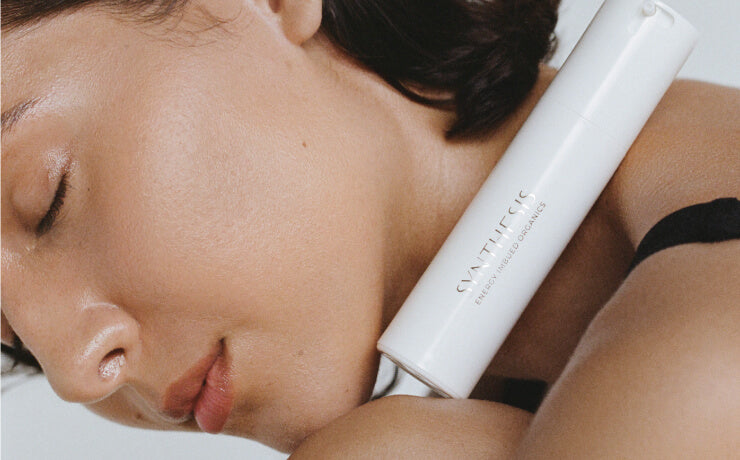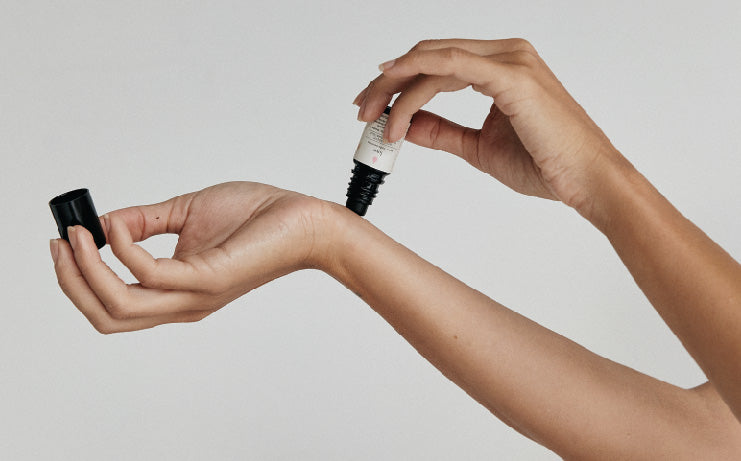
5 toxic ingredients hidden in your skincare
We use skincare with the intention that it is absorbed into our skin, to hopefully provide a number of benefits. This means that if there are chemicals or synthetics hidden in your products, these will be absorbed also. As expected, this can have incredibly harmful consequences. It can be tricky to know what to look out for, so we've compiled the five most common toxins.
At Synthesis Organics, one of our skincare mantras is "it has to be pure enough to eat", ensuring our skincare is 100% chemical and toxin-free, using only the highest quality, certified organic ingredients so you can be assured that you are safe with us.
1. Parabens
Parabens are commonly used as preservatives in skincare products and cosmetics to prevent the growth of bacteria, mold, and yeast. As they are absorbed through your skin, they are potentially incredibly toxic. A 2012 study reported the presence of at least one paraben in 99% of human breast tumors sampled and about 60% of those samples containing five parabens. Thus, the study showed parabens are getting into our bodies and that they may be a contributing factor to breast cancer. Parabens may also cause reproductive health and fertility problems.
2. Fragrance Scent additives, fragrances are often included to cover up the smells of chemicals. They are also the foremost cause of allergic reactions from skincare. According to the Environmental Working Group (EWG) Skin Deep Database, fragrance mixes have been associated with allergies, dermatitis, respiratory distress, and potential effects on the reproductive system. It can be found in a variety of products and is incredibly common.
3. Diethanolamine (DEA), Sodium lauryl sulfate (SLS) / Sodium laureth sulfate (SLES) Diethanolamine (DEA) and Sodium laurel sulphate (SLS)/Sodium laureate sulphate (SLES) are used as foaming agents in skincare and other products. They are known skin. lung and eye irritants. Worse than that, over time they can react with other chemicals in a product’s formula and produce a carcinogen called nitrosodiethanolamine (NDEA). In a study to assess the risk of NDEA, the chemical-induced liver tumors in all laboratory rats used during the research. NDEA is stated as carcinogenic in all laboratory animals tested and produces bladder, stomach, intestine, esophagus, and respiratory tract tumors, according to the International Agency for Research on Cancer.
4. Toluene One of the most hidden chemicals, toluene can be found on labels listed as benzene, toluol, phenylmethane and methylbenzene. A petrochemical derived from petroleum or coal tar sources, toluene is a potent solvent able to dissolve paint and paint thinner. It can cause feelings of nausea, skin irritation and affect your respiratory system, and has been linked to immune system toxicity. Expecting mothers should avoid exposure to toluene vapors as it may cause developmental damage in the fetus. It can be found in nail polish, nail treatments, and hair color/bleaching products among others.
5. Phthalates Phthalates are chemicals most seen to be used in conjunction with products containing fragrances, as it gives them more staying power. Phthalates also go by the abbreviations of DBP, DEP, and BzBP on personal care products. The chemical is linked to reproductive damage, hormonal disruptions, and birth defects. In a 2006 study, research showed a link between phthalates and decreased sperm quality. The Environmental Working Group, among other organizations, tested 72 personal care products for phthalates and found the toxin in 52 of those products tested.








Leave a comment
This site is protected by hCaptcha and the hCaptcha Privacy Policy and Terms of Service apply.